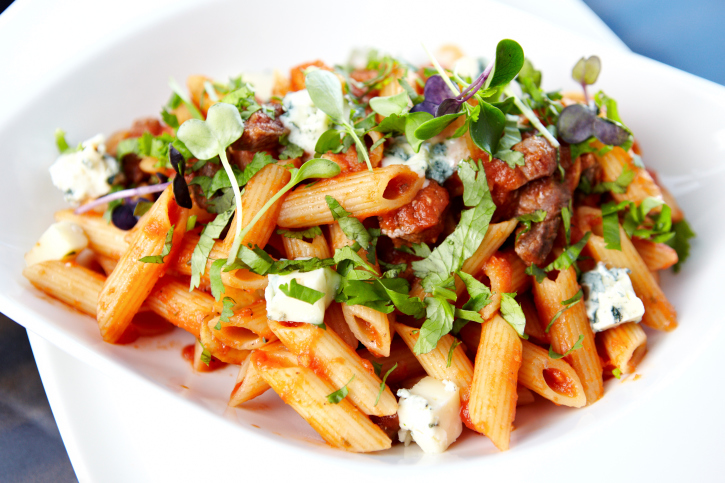The importance of pasta dinner

If you asked me what is the best part of a marathon race, without hesitation I’d answer it’s pasta dinner the night before! It’s a crown to the months of gruelling training, when all that’s left to do is eat, sleep and run. The common wisdom has it that pasta fuels our runs. Not only is it delicious and can be prepared in thousands of different ways: with meat or meatless, with or without strong flavor, spices and sauces, but it also reloads our glycogen stores and provides enough fuel for a marathon.
A marathoner friend once admitted to eating pasta dinners the whole week leading to the race, to “supercharge” his reserves of glycogen. I thought it a bit excessive, but I, too, make a rule of having pasta before the race. It’s led to a few disasters on and off the course. For my debut Boston Marathon I booked the hotel too late and ended up on the outskirts of town, far from better-known pasta joints. Nevertheless, racing without pasta was inconceivable, so I went in search of a restaurant with it on the menu. The result was a plate full of something that resembled spaghetti only by its shape — a sticky, tasteless pile of noodles with a smattering of red tomato (I hoped) sauce over it. Bravely, I polished the plate and my breath carried the foul reminder of the awful dinner all through the night and into the race. Luckily, I felt no other consequences that time.
I was less fortunate in Berlin, though the dinner was much tastier. In a “genuine” Italian restaurant near the hotel, where even the waiter sounded genuinely Italian, I ordered pasta with frutti di mare — seafood. One of the lessons my grandmother tried to teach me (which I usually ignored) was to never order seafood far from the ocean because the only way to get it to your plate is to freeze and defrost it, possibly several times. Shellfish and soft seafood turns bad easily, she stressed. It turns out she was right. I spent the night awake with stomach aches. I ran my marathon the next morning dehydrated and exhausted.
Of course, there were many other times when pasta dinner didn’t turn against me and, I thought, carried me through the race and over the wall the next day, but some don’t think the pasta tradition is actually that important after all.
Apparently, what really increases the glycogen stores in the muscles isn’t what we eat the night before the race, as much as the so called “taper effect” combined with what we consume during the race. I think I detected the eyebrows shooting up, so let me explain:
During the high-mileage of marathon training, muscles are used to storing and burning high levels of glycogen. When we reduce the mileage during the taper before a race, the muscles use much less energy, thus allowing glycogen stores to increase even if we don’t add an extra pasta meal each day.
Although carbo-loading seems to have some negligible effect during the marathon race (it had been proven to have no influence whatsoever on half-marathon and shorter races), a 1993 study from Ball State University found that athletes perform the same whether they carbo-preload before the race, or consume the carbs during the race.
It turns out that all the time I frantically drove through a foreign city looking for an Italian restaurant had been in vain. But, you know what? There’s no proof that carbo-preloading hurts the performance either (except when it’s combined with seafood!). And, because my taste-buds are also an important body part, I intend to continue with the pasta tradition, whether it helps or not.
Buon appetito!


